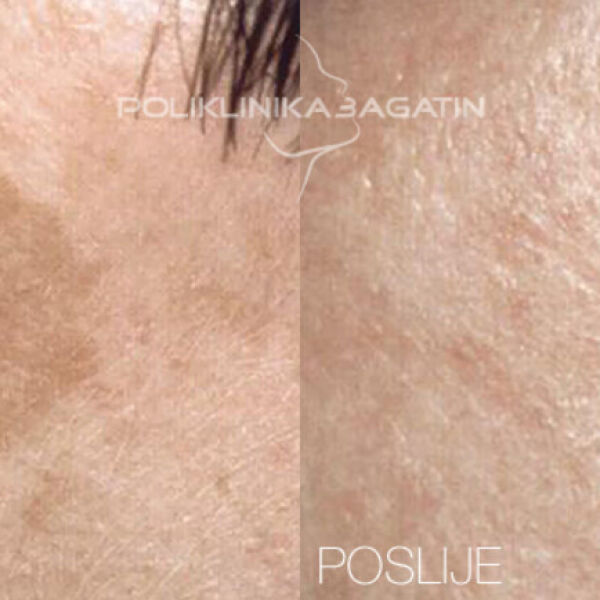Laser removal of benign changes
About
Laser removal of skin lesions is a medical procedure used to eliminate various unwanted skin changes such as moles (nevi), keratoses, fibromas, angiomas, and the like. This treatment utilizes laser technology to target and remove specific skin lesions.
Candidate
Candidates for laser removal of skin lesions typically include individuals who want to remove one or more specific skin changes for aesthetic or medical reasons. These may include moles, warts, keratoses, or other skin lesions. Candidates should be in good overall health.
Preparation
Preparation for the treatment usually involves a consultation with a dermatologist or a skin specialist to determine the type and nature of the skin lesions. During the consultation, the specialist will assess the skin and select the appropriate laser for the treatment. Patients should inform their doctor about any medications they are taking and other health issues to avoid potential complications.
Treatment
The actual treatment of laser skin lesion removal involves directing laser energy toward the skin lesion. The laser then selectively removes the skin lesion. Depending on the type of laser and the skin lesion, the procedure can be non-invasive or require minor surgical intervention.
Result
Results of laser skin lesion removal depend on the type and size of the skin lesion but typically result in the removal or reduction in the visibility of the lesion. After the treatment, the skin will go through a healing process, and the final results will gradually become apparent.
Precautions
Precautions after the treatment include protecting the treated area from sunlight to avoid hyperpigmentation or scarring. Additionally, patients should follow the doctor's instructions for skin care to ensure successful healing. It's important to consult with a qualified professional to obtain all the information about the treatment and determine if you are a suitable candidate.
ZagrebMed patient reviews
F.A.Q.
Some people are born with moles, while others develop them over time. Exposure to the sun plays a major role in the development of moles, and it can also be important in the development of atypical or dysplastic moles. The importance of genetics should also not be underestimated. In many families, the so-called dysplastic (atypical) moles may be associated with a higher incidence of melanoma or skin cancer.
If you have noticed any benign change on your body such as moles, warts, xanthelasma, milia or fibroma, then you are a candidate for this procedure. As for moles, the ideal benign mole for laser removal is skin-level and skin-colored with no hair growing from it.
There is an uncomfortable feeling during the treatment, but most people tolerate the procedure very well. For the comfort of the client, a small amount of local anesthetic is applied to the site of removal of the skin change.
It is important to emphasize that during laser treatment, the skin change is completely removed at the microscopic level, and there is no possibility to send the treated tissue to a pathologist for analysis to establish a definitive diagnosis.
Just before the lesion is removed, a small amount of local anesthetic is injected around or under it. Laser removal works by having the water in your skin cells absorb focused laser light. This absorbed energy then causes the target cells to vaporize instantly. As the laser passes over the skin, nearly 30 to 50 microns of tissue is removed at a time. This incredible control allows the doctor to precisely remove the change in the skin.
The lesion and surrounding skin will be pink or red after fractional Eribum laser treatment. It is important to protect the treated area from sun exposure for at least a month.
People usually resume their daily activities immediately after treatment.
The development of complications after laser mole removal is extremely rare. Sometimes the surface of the treated skin may be slightly raised or lowered from the surrounding area, but this evens out over time.
If a microscopic cell belonging to the mole that cannot be seen with the naked eye remains at the place where the mole is removed, part of the mole can partially return. World scientific literature and numerous studies have shown that the frequency of partial return of moles after laser removal is about 23%. In case of recurrence, the rest of the mole is additionally removed during the control examination without the need for local anesthesia.
The formation of such scars is written in the genetic map of each of us. Any violation of the integrity of the skin in people with such a tendency can result in the formation of a hypertrophic scar even after laser removal. Although the chances of this are much lower than with surgical removal. If you have such a tendency and previously formed scars, it is necessary to inform the doctor about this before starting the laser procedure.
Before & After
Photos


Send an inquiry for the treatment
Start your way towards a successful treatment today. Fill out the form with your data, choose the service you need and we will connect you with the top medical experts in Zagreb.